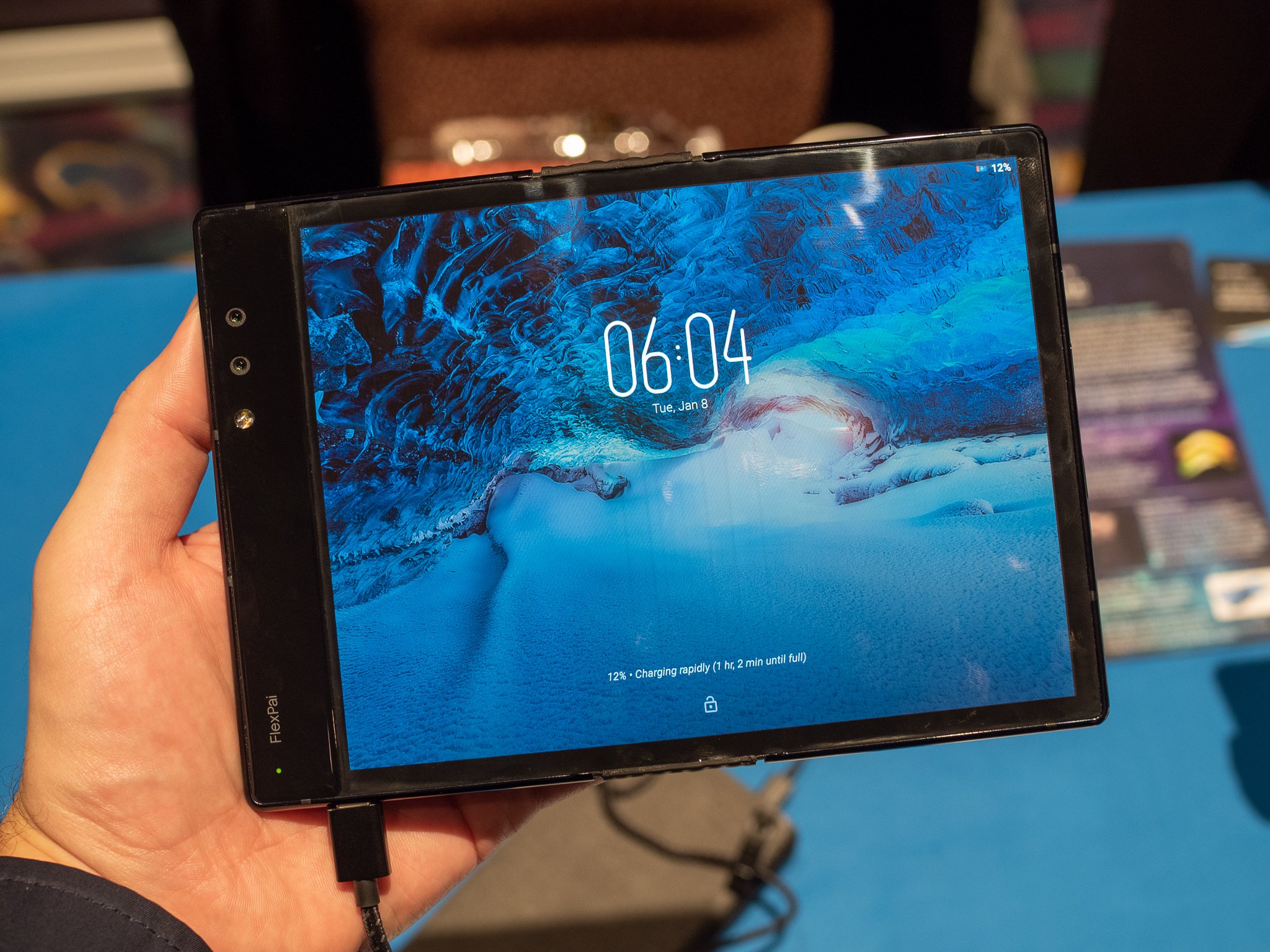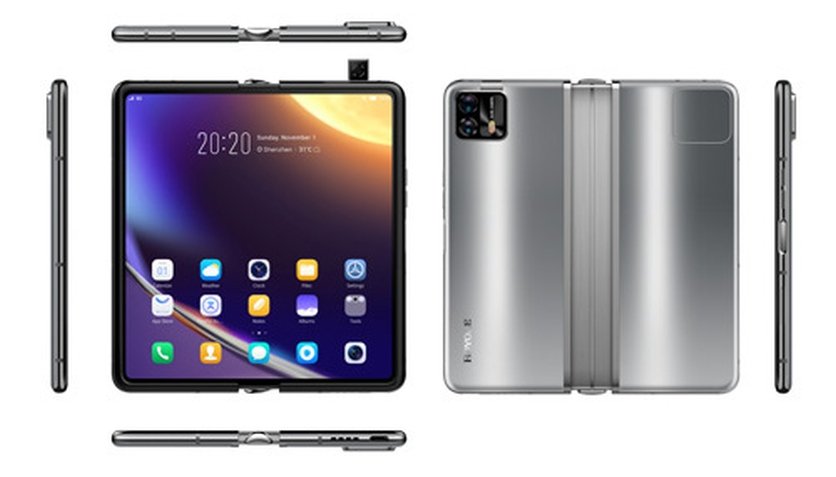There's no word on when the phone could be announced.
What you need to know
- An alleged render of the Royole FlexPai 3 has surfaced.
- The leaked image suggests the foldable phone will come equipped with a pop-up selfie camera.
- The phone is rumored to have a 7.2-inch display and a 3,360mAh battery.
Royole, which unveiled the world's first foldable phone back in 2018, is soon expected to launch its third foldable phone to challenge Samsung's Galaxy Z Fold 3. A render of the upcoming phone has been posted online by reliable leaker Evan Blass, giving us a clear look at its design.
As you can see in the leaked render above, the Royole FlexPai 3 will look very different from its predecessors. Unlike last year's FlexPai 2, the upcoming foldable will not have a vertical camera array on the left-hand side. Instead, it appears to feature a square-shaped camera bump housing only two sensors. The FlexPai 3 could also be the first Royole foldable to feature a pop-up selfie camera.
According to a listing for the phone that was spotted on the TENAA website earlier this year, it will come with a 7.2-inch inner screen. In addition to a smaller main display, the Royole FlexPai 3 is also expected to pack a much smaller battery than its predecessor. While the FlexPai 2 packs a 4,450mAh battery, the FlexPai 3 is said to come with a 3,360mAh cell. The phone is tipped to offer 5G connectivity as well.
The phone may not be anywhere near as impressive as Samsung's best foldable phones, but it is likely to be much more affordable. Royole launched the FlexPai 2 last year for 9,998 yuan (about $1,500) in China, roughly $500 cheaper than the Galaxy Z Fold 2.
The FlexPai 3 will likely be even more affordable, although it remains to be seen if the phone will be cheaper than Samsung's Galaxy Z Flip 3. It also remains to be seen if the FlexPai 3 will be sold in markets outside China. Until now, Royole foldables have been limited to China.
Source: androidcentral

